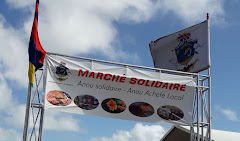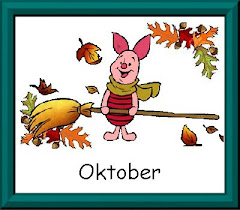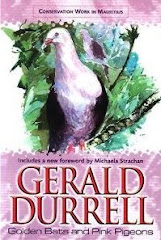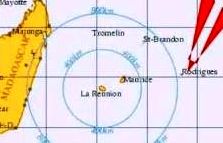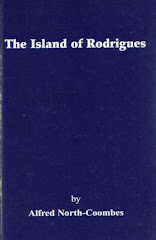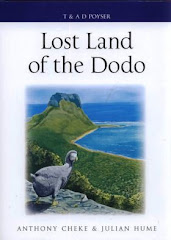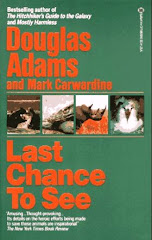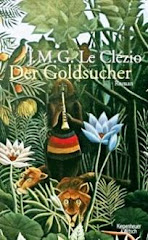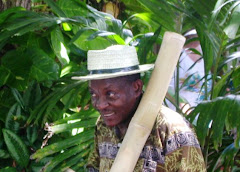The “International AIDS Candlelight Memorial”, an initiative of the Global Health Council in Washington DC/USA is one of the most ancient communitarian mobilizations on HIV/Aids at world level. It started
1983 in San Francisco and has been celebrated ever since on a yearly basis (with one exception), what started as a grassroot movement, involves today 119 countries and 1,200 communities throughout the world. Kick-off place this year is Haiti, and the celebrations take place everywhere on today's Sunday, May 17, with the theme :
 “Together, we are the solution”.
“Together, we are the solution”.In Mauritius the celebration of the International Candlelight Memorial will be held at about
30 different places
including 3 in Rodrigues. More than 20 groups and associations have been involved during the mobilization. The activities in Mauritius related to the International Candlelight Memorial began already 6 months ago on December 1, the International Day Against HIV/Aids. During the next six months numerous workshops around HIV/Aids will occur throughout the island in order to reinforce both education and prevention around this disease. Beyond the symbol that this Memorial represents, tribute and respect to the people who died from consequences of Aids and providing support to people living with HIV, this event is an outstanding opportunity of communitarian mobilization.
 HIV progress & Actual Situation*
HIV progress & Actual Situation*With a close
4,000 screened (remember in May 2005/
669!) and a national incidence estimated around 1,8% (source:UNAIDS), Mauritius is the most affected country by HIV in the Indian Ocean zone. Each month around 40 to 50 new cases are detected with half of the cases detected in prisons. More women and children are gradually being affected.
Presently, the sole indicators in terms of epidemiological monitoring are found at the level of prisons, pregnant women (in the public sector) and blood donations. Studies focusing on the youth, intravenous drug users, sex workers and immigrants are needed.
 Treatment
TreatmentAnti-retroviral molecules presently available in Mauritius have to be renewed. Several patients already are resistant to these molecules and experience a treatment failure. There are not enough referent doctors and nursing personnel qualified for the treatment of patients. An action plan for the treatment of patients living with HIV was designed, but is not applied. Prevention and care for people living with Hepatitis C is nonexistent, which might cause on long term sanitary failure not only among addicts and their families but also within the sanitary units’ employees.
The NDCCI (Centre Bouloux) being disconnected from a medical structure, patients have to undertake tedious roundtrips to the hospital for their analysis and this at their own cost. Often they experience job-related issues and are fired when they absent themselves (casual work).
The NDCCI is the only place where referent doctors are and where patients may go in order to receive treatments. Some patients live at remote distances and must take leaves to attend consultations. Due to this, some have lost their jobs. Consequently, others have stopped their medical followup and treatments.
Decentralisation as in line with the National Strategic Framework 2007-2011,would be an essential improval.

For HIV-positive pregnant women, there is an increasing amount of failures in prevention
of Mother-to-Child Transmission of the virus (PMTCT). Several HIV-positive women refuse to come to the Cassis care center; too far, stigmatization, rejection by the family. A prospective solution could be the weekly consultation in regional hospitals and an awareness campaign on the
importance of prevention of Mother-to-Child Transmission of the HIV in hospitals and
dispensaries. Testing No clear national policy planned on counseling, screenings in the private sector, the “routine testing”, confidentiality/anonymity and training for health officers practicing testing.No screening-aimed campaigns among the most vulnerable groups (the youth, sex
workers, intravenous drug. Poor quality of reception and of screening structures in the private and public sectors. No prevention, called “secondary level prevention”, among people living with HIV.
The death rate of patients in the Aids phase is presently highly worrying.This situation is attributed to:
Patients devoid of immune defenses are hospitalized in a non-sterile environment. A lack of referent doctors to undertake the follow up. A lack of nursing personnel in the caring of PLHIV
A lack of trained referent doctors in taking care of certain opportunistic infections and absence of appropriate care. No suitable care of co-infections with hepatitis. No doctors trained to the managing of PLHIV in the private sector. Unsuitable care of addiction.
Prevention and sectored (closed) caring and nonsectored in prisons No care for dependence of
prisoners to methadone. Stigmatization of convicts living with HIV. Prevention and sectored (closed) caring and nonsectored in prisons No care for dependence of prisoners to methadone.
Stigmatization of convicts living with HIV.
EDUCATION & PREVENTIONWhile the numbers we hold clearly display an increase in the number of young people
contaminated by HIV, information on HIV/Aids and reproductive health still struggles to reach primary and secondary schools. Our youth is in danger!
 Primary prevention lacking
Primary prevention lacking - Very limited access to male and female condoms (dispensers)
- The Femidoms (femalecondoms) are inaccessible on the market or at non-affordable prices.
- Not enough information through the media especially on TV
- Condoms distributed and sold in Mauritius undergo no quality control upon their arrival,
even if we possess a factory specialized in this type of testing (VALENDOR) and which works
for Europe, Asia and Africa.
- Little or no communication on the need to use of a waterbased lubricant with condoms.
 Risk reduction program for intravenous drug users
Risk reduction program for intravenous drug usersThe introduction of methadone for people dependent upon heroin has been one step in the right direction, but there esist still numerous problems:
The project is still at the “pilot” stage; a high quantity of demand and not enough availability.
Distribution times are not appropriate and do not allow patients to assume a professional activity.
No psychological support for patients under methadone resulting in relapse, multiple addictions and overdose.Traveling patients under methadone cannot resume their treatment upon their
return. Protocol is devoid of provision for methadone.No consideration for dependence, no risk reduction program for young addicts (under 18) despite their large numbers.
Needle exchange program (NEP)Why is there no more meeting of the multisectoral NEP committee?
Needles given by the MOH&QL are often too big. Materials donated should also include a disinfectant (swabs) and filters to prevent hepatitis C transmission.
Housing problems & PovertySeveral people living with HIV are homeless. Two shelters for men were set up by the Catholic Church these are often full. Provisionary housing should be built for both men and women sleeping in the streets, accompanied by reintegration programs.
• ANSAM NOUMEM SOLISION LA •
 COMMEMORATION A RODRIGUES en 3 endroits:
COMMEMORATION A RODRIGUES en 3 endroits:
- 18 - 20 h à Port Mathurin (MCB)
- 18 - 20 h à Grande Montagne (terrain volleyball)
- 18 - 20 h à Citron Donis/Petit Gabriel ( Centre de Jeunesse)* ALIME ZOT LEKER * Related articles:
Related articles:
Le Mauricien du 09.05.2009/en frc. About Candlelight/ engl.,
About Indian Ocean and AIDS Candlelight 2008/dt. & engl. here, Photos of 2008 on Picasa here* Main text source Advocacy Document provided by Mauritian organizers of AIDS Candle Light Memorial.
 Heute ist der 30. , da sind Regenbögen immer besonders willkommen...Dieser ist von Silke Bender, an ihrem letzten Tag im Februar...
Heute ist der 30. , da sind Regenbögen immer besonders willkommen...Dieser ist von Silke Bender, an ihrem letzten Tag im Februar...


















































